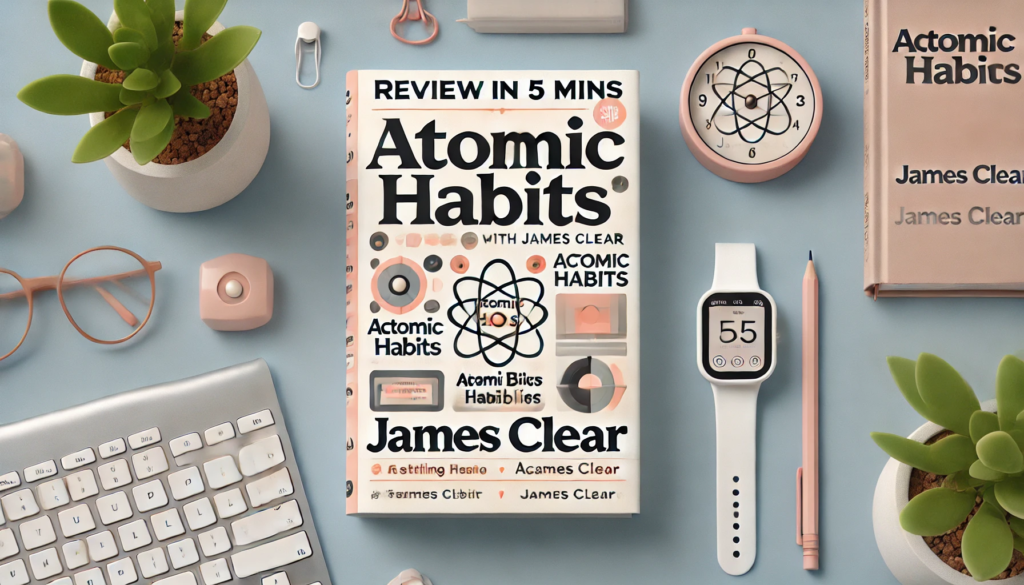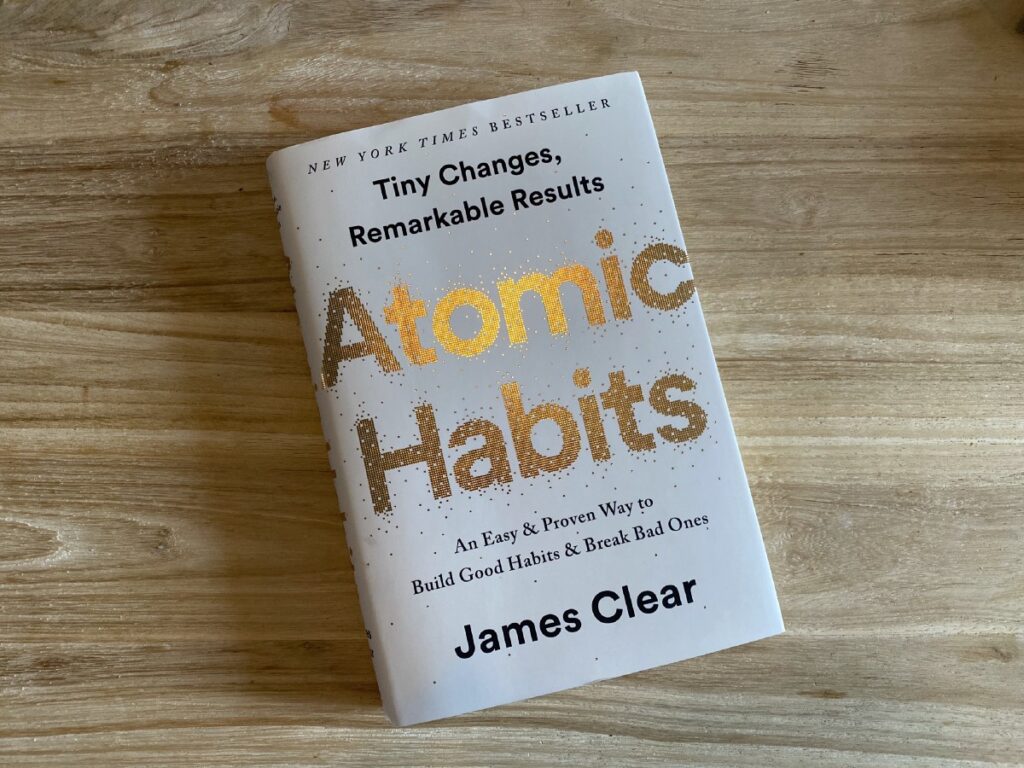I recently concluded reading Atomic Habits by James Clear and here’s my honest review and thoughts about the book in a few sentences. I hope you enjoy and learn from me.
Atomic Habits by James Clear is a simple practical book that helps you build the fundamentals of good behaviour and grow from there. Because truly, any remarkable results start from building daily consistent habits that are compounded.
It starts with building habits from scratch, which is first identifying yourself with the habit and then building systems of habits instead of always setting goals. Even after you’ve successfully built a habit, you have to continually review and reflect on the habit to improve.
This book redefined what success meant to me. Success is not an end goal to attain but a never-ending cycle of improvement.
Instead of looking at the big goal, look for the habits that bring success for the goal and consistently look to building on and refining those habits. In the end, success in the goal is inevitable.
This and more resonated with me and I think the book is an excellent book to explore regardless of your level or sphere of influence. No wonder people effortlessly recommend the book a lot.
Book Summary
Now to the main summary of the book.
Habit change starts with 3 levels: Identity, Process and Outcome.
For habit change to be effective, it should start from the lowest level: identity. You have to first identify yourself as someone who carries out that habit and eliminate your mind from any limiting thoughts or mindsets that would hold you back.
The next level is Process. Here you look out for the processes that will help you achieve your desired outcome and then implement. The Outcome is the end goal you want to achieve.
Most people approach behavioural change from an outcome standpoint, they think about the goals alone and not about the systems of achieving the goal.
For example, you set a goal to lose weight.
Lose 30kg (Outcome)
Exercise 3x a week
Find and stick to a meal plan (process)
Seeing yourself as a healthy person (Identity)
The ultimate form of intrinsic motivation is when a habit becomes a part of your identity. You must constantly edit your beliefs, upgrade and expand your identity to become your best version.
To change your identity, decide the type of person you want to be and then prove it to yourself with small wins in the habit.
“Every action you take is a vote for the type of person you wish to become” – James Clear
How to Build a sustainable habit in 4 processes:
They are cue, craving, response and reward.
The cue signals the brain to perform the habit. You see a cue and remember the habit. Cue leads to cravings, making you desire the outcome or reward of the habit. If the reward or motivation is strong enough and there’s less friction associated with doing the habit, you move to response (carrying out the habit). Then you get the reward for doing the habit.
4 laws of Behavioural Change
First law: Make it obvious (Cue)
Second law: Make it satisfying (Craving)
Third law: Make it Easy (Response)
Fourth law: Make it attractive (Reward)
First law: Make it obvious
To start a habit, it needs to be very noticeable. That way, you’re more likely to work on the habit.
Create a habit scorecard, which is a list of habits you do daily to become aware of your habits and build intentionality around the habits you want to build. To ensure you push through with your habits, you need an implementation strategy, a plan that highlights when and where you want to perform a habit.
Template: I will [Behavior] at [ time] in [location].
I will read by 9 pm on my bed.
Curate your environment to make habit cues more prominent and habits easier to perform.
Second Law: Make the Habit Attractive
The more pleasing a habit is, the more likely you’ll perform it, whether good or bad. Ensure to make the reward for the habit you want to perform high enough to want to perform it. Join groups and activities that reinforce and support the habit and identity you want to build. Join your tribe.
Furthermore, reprogramming your mindset to a positive one helps you approach your habits positively and you follow through. Habits are attractive when associated with positive feelings. Think about your habits in terms of their benefits, not their drawbacks.
Also, to motivate yourself to do a habit, do something which you enjoy immediately after a tough habit to reward yourself.
Third law: Make it Easy
Don’t waste time thinking or planning a habit that you delay or refuse to take action. Habits need repetition to be mastered and be automatic. Also, you’re more likely to perform a habit if it’s easy to do. Optimise your environments for easy habit performance.
In addition, it is pertinent to have to 2-mins version of your habit that will encourage you to do the habit rather than doing nothing at all. Reading 1 chapter of a book can be reduced to reading 1 page per day.
Moreso, if you have a list of habits but feel overwhelmed to start, you can start with the easiest and build your way up. Automate recurring habits to ensure you carry them out. Do something in the present that affects your future habits.
Fourth law: Make it Satisfying
Rewarding habits are repeated. You should take note to engage in habits that deliver quick gratification because the fruits are bad in the long run. Find ways to make good habits more gratifying by rewarding yourself after performing the habit. Celebrate yourself for performing a good habit.
Furthermore, to make a habit more satisfying, track the habit, seeing your progress motivates you to do more.
Get an accountability partner for your habits with rules and punishment that’ll encourage you to do the habit.
When choosing habits, don’t just choose because others are doing it. Choose habits that align with your natural inclinations and abilities because this gives you an advantage and keeps you on the long haul. Introspect and find and do things that you’re more aligned to.
Keep challenging yourself with each habit to grow in the habit. Stay with the boredom that comes with routines of a habit. After mastering a habit, go back to building the next habit and you grow mastery in the habit. Each habit unlocks the next level of performance. Establish a system to reflect and review your habits to make necessary improvements.
Success isn’t a goal to be attained but a system to improve, an endless process to refine, and it starts with a tiny habit that compounds to something much bigger through repetition and improvements.
Thank you for reading. Join our reading community here. Visit our blog for more book content.



